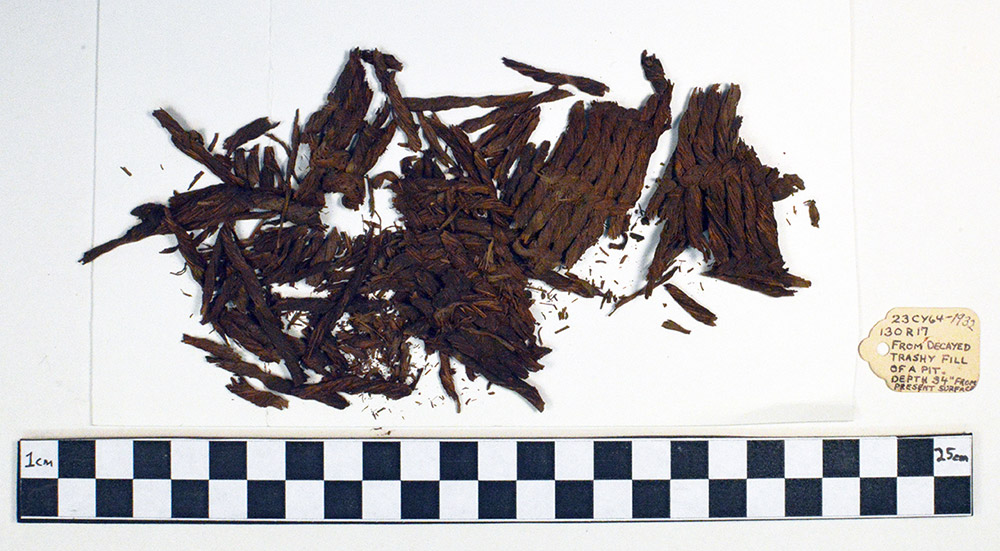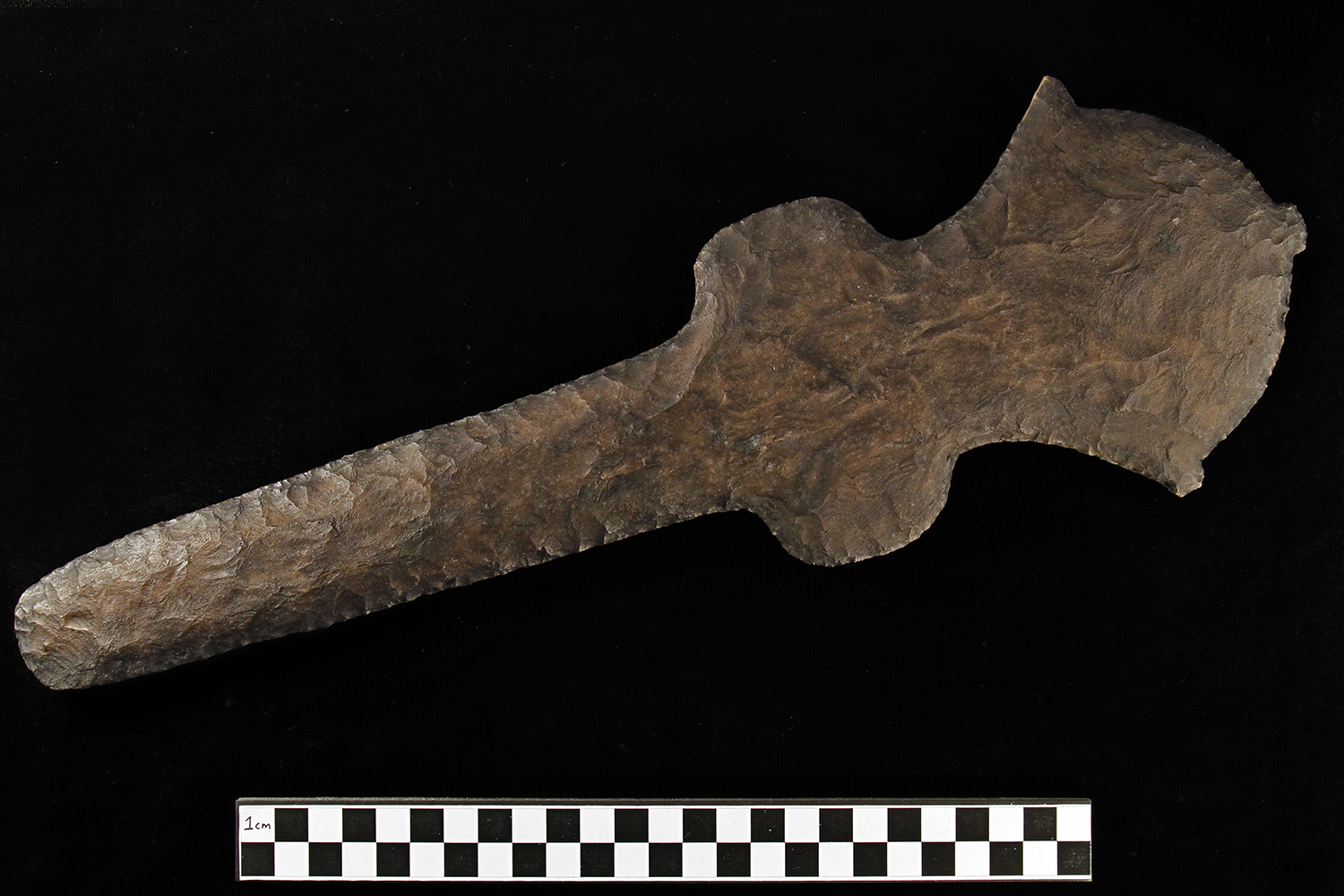Archaeology
Archaeology is the study of human history through material remains. Archaeologists cannot study people from the past directly; instead, they must learn about them through the artifacts or other material remains they left behind. These artifacts and materials include arrowheads, spear points, pottery, bones, houses, and even trash. The study of these objects focuses on how they change through time and across the landscape, as well as how humans lived and adapted to their environment. Recording and understanding the context in which artifacts are found – their location and relationship to other artifacts – is the most important part of the excavation process.
Archaeological investigations have been conducted in every one of Missouri’s 114 counties. Prehistoric and historical-period sites have been found all across the state. However, the majority of sites are located near the major rivers and tributaries. In this online exhibit, some of the more notable finds in Missouri archaeology are presented. The artifacts displayed here were excavated by University of Missouri staff and members of the Missouri Archaeological Society, and are part of the Museum of Anthropology’s archaeological collection.

Cast of the Jaguar Gorget
Note: Due to the association of the gorget with a human burial, images of the actual object are not shown out of respect.
Jaguar Gorget
The most recognizable Missouri artifact is the Jaguar Gorget. A gorget is an engraved shell perforated for suspension and worn at the throat or chest. Dr. Raymond Wood and Rolland E. Pangborn excavated the artifact in the Fairfield Mound site in Benton County. Identification of the design as a jaguar is almost certain due to the detailed characterization of traits distinctive to the jaguar, such as the location of the spots as well as the form of the head, ears, and tail. The Jaguar Gorget was most likely produced during the Middle Woodland period (250 B.C. – A.D. 450) and passed down through generations, until ultimately deposited in a Late Woodland burial (A.D. 450 – 900). The representation of the jaguar has been the cause of much debate. The animal is not known to have inhabited Missouri and has only come as far north as southeastern Texas and southern Louisiana. The representation could be the independent use of the jaguar motif or diffusion of iconography from Central America.
Cat Monsters
Cat-monster vessels are found in the central Mississippi River valley, especially in Pemiscot County. Cat monster is the term commonly used to describe a style of pottery in which a bowl is the body of the “monster” and incised designs form the head and tail. This style dates from the Late Mississippian period, after A.D. 1350.
Graham Cave
Deposits in Graham Cave date from the Late Woodland period back through the Early Archaic period. These deposits have helped to build a chronological background for the Archaic period (7,500 – 600 B.C.) as well as the transition to the Woodland period. The artifacts offer us a look into the life of Archaic people in Missouri. Some of these artifacts include the bone needle and hairpin pictured here. Graham Cave is also the type site for Graham Cave side-notched points. These points range between 10 and 15 cm in length and are from the Middle Archaic period. They are common across most of Missouri and also occur less frequently in western Illinois and northern Arkansas.

Arnold Research Cave - Basket
Shoes from Arnold Research Cave
Considerable public interest has centered on the footwear discovered in Arnold Research Cave located in central Missouri. Beginning in the 1950s, several dozen prehistoric shoes were excavated from the cave. Included are leather moccasins as well as sandals made from rattlesnake master. Fibrous materials are perishable and decompose relatively quickly; they are rarely preserved in the archaeological record. Fluctuations in temperature and moisture cause the material to expand and contract. This movement eventually leads to the break down and destruction of the fibers. Arnold Research Cave, however, is one of the few dry caves in Missouri, providing constant temperature and humidity levels, thus preventing the shoes from decomposing.
There are shoes that fit only the right foot, only the left foot, and some that fit either foot; no pairs were found. In 1997, Mike O’Brien, director of the Museum of Anthropology, dated several of the shoes using a technique called accelerator mass spectrometry (AMS). Amazingly, some of the shoes date back as far as 8,000 years ago.

Lilbourn Mace Cast
Note: Due to the association of the mace with a human burial, images of the actual object are not shown out of respect.
Lilbourn Mace
The Lilbourn Mace is one of the most unique artifacts found in Missouri. The mace is made from Mill Creek chert (the source of which is in southern Illinois) and measures 40 cm long, 13 cm wide, and 2.3 cm thick. It was recovered from a burial at the Lilbourn site in New Madrid County and possibly indicates the individual’s high status. The artifact dates to the Middle Mississippian period (A.D. 1200 – 1400).
Utz Site
Hematite (often called paint stone) and catlinite (often called pipe stone) are both relatively soft materials that are used as mediums for art. Animal, human, and abstract designs were engraved on large flat tablets of hematite and catlinite. The tablets pictured here are from the large protohistoric-period Utz site in Saline County. The Millard Tablet No. 2 has an animal resembling a deer carved into the dark brown hematite. The Irvine Tablet is also hematite and depicts a stylized bird believed to be an eagle.
Catlinite pipes are also found in abundance at Utz. Each pipe is unique; of the over 200 recorded, no two are alike. Pictured here is a catlinite disk pipe, one of the common styles found in this area.
Text by Jessica Boldt
Photos by Chiara Della Cava
Spring 2009
